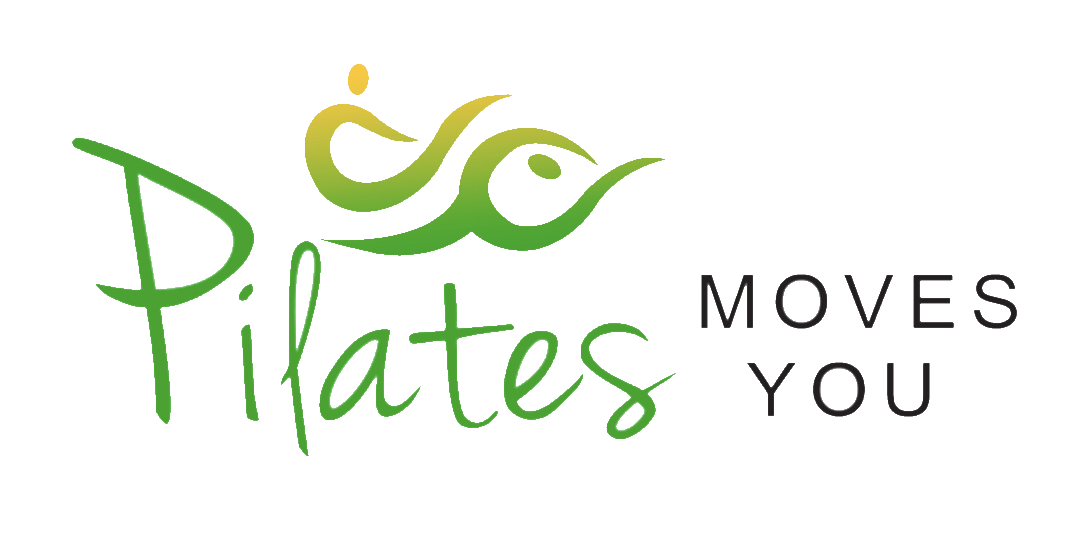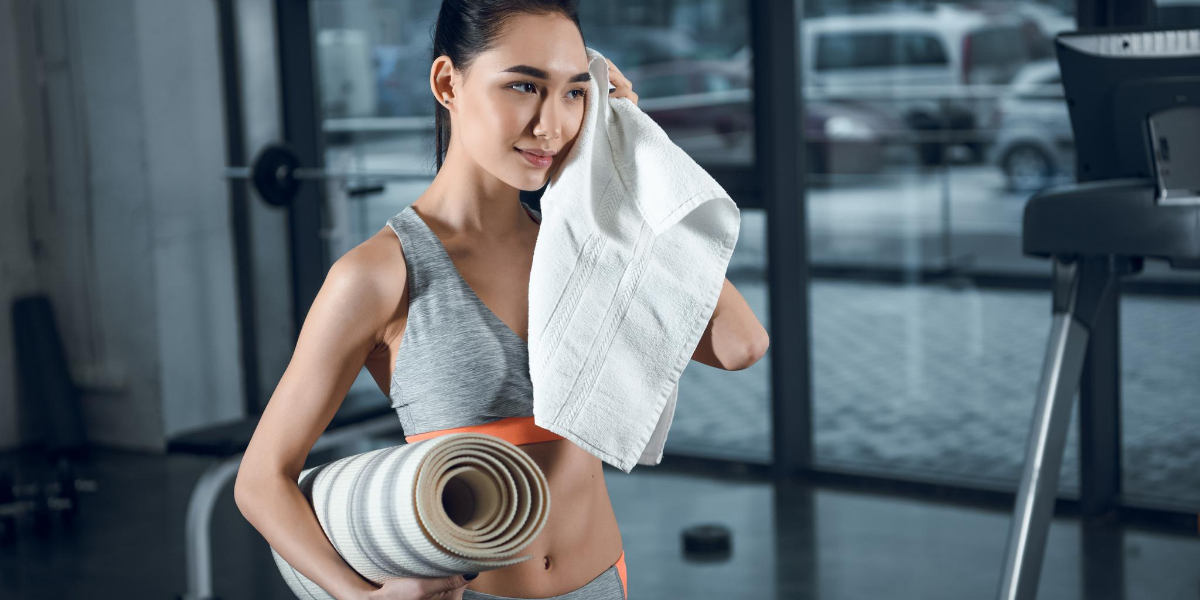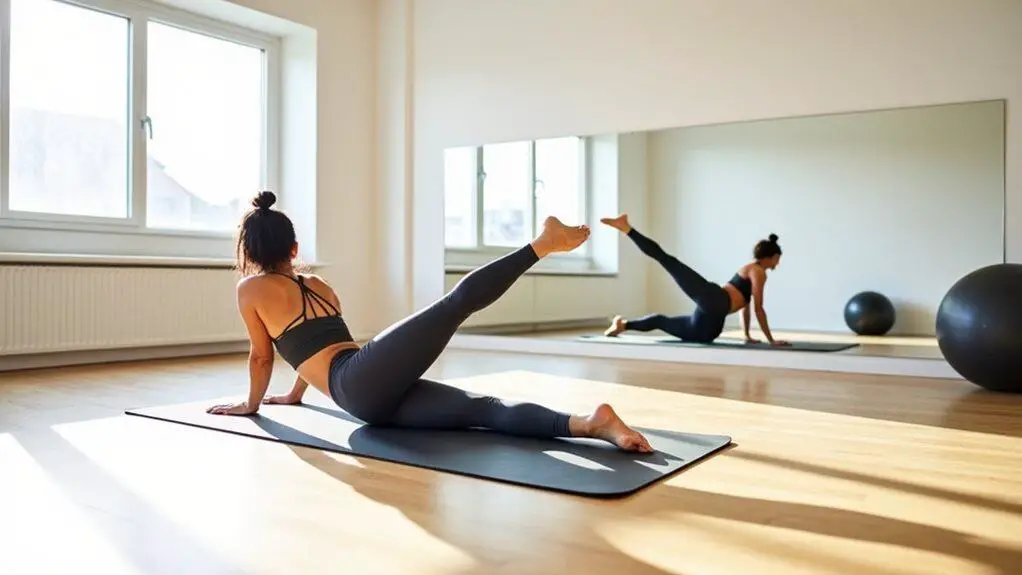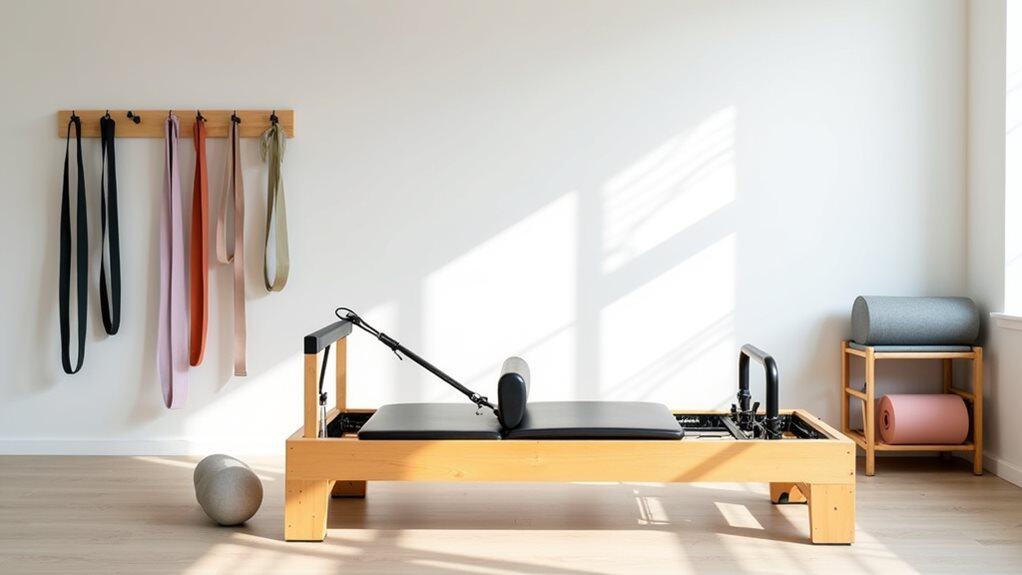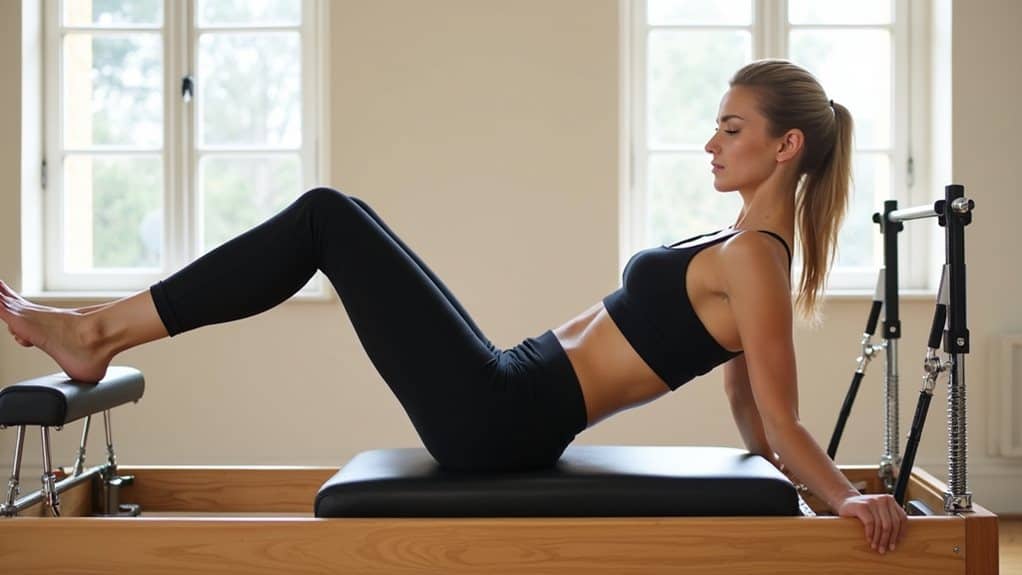It may seem like Pilates and yoga have a lot in common, but the truth is they are two distinct forms of exercise. So, is one harder than the other?
Both Pilates and yoga can be challenging in their own ways, but it ultimately depends on the individual and their fitness level. Pilates tends to focus more on core strength and stability, while yoga combines physical postures with breathwork and meditation. Some people may find Pilates harder, while others may find yoga more difficult. It’s important to try both and see which one works best for you.
Get ready for an eye-opening exploration into which discipline might be best for you – the answer may surprise you!
What is Pilates?
Pilates is a form of exercise focused on building strength, improving flexibility and balance, and developing bodily control and awareness.
The practice incorporates body weight exercises, breathing techniques, and targeted abdominal and core muscle workouts.
A Pilates class doesn’t require any equipment, but can often make use of small props like hand weights or mini stability balls to help with positioning and alignment.
The focus is on precise movement patterns that aim to maximize range of motion while ensuring proper form.
This can help individuals of all fitness levels get fit, increase their overall strength, and tone their muscles—all while engaging in a low-impact workout. In short, Pilates offers an effective full-body workout for mind and body!
Pilates is a great way to get fit, increase strength and tone muscles, while also being mindful of the body. It’s a unique workout that can benefit everyone from beginners to fitness pros. Now, let’s explore what yoga has to offer – stay tuned for the next section on What is Yoga?
What is Yoga?
Yoga is an ancient form of exercise with roots in India. It focuses on the connection between mind, body, and spirit and seeks to bring balance to all three areas.
The practice incorporates various postures (asanas) and breathing techniques (pranayama). Yoga is commonly practiced alongside meditation, chanting, and mantras. There are various types of yoga, such as Hatha, Vinyasa, Ashtanga, Iyengar, Kundalini, and others.
The physical benefits of yoga include increased flexibility, improved strength and balance as well as enhanced core stability.
It can also help improve posture and joint health while reducing stress levels. On a mental level, yoga helps to cultivate focus and clarity while encouraging feelings of peace and relaxation. It can be used as a tool for self-discovery and healing as it encourages practitioners to stay present in the moment with their thoughts, feelings, emotions and sensations.
Overall, yoga can be a great way for individuals to take care of both their physical health as well as mental wellbeing. With regular practice individuals will be able to achieve their fitness goals while developing an awareness of their body’s needs—allowing them to live life to the fullest!
Is One Harder Than the Other?
The debate between Pilates and Yoga has been a popular topic for years. It can be difficult to determine which form of exercise is the most effective or which one might be harder than the other.
Both forms of exercise offer numerous benefits such as improved core strength, increased range of motion and flexibility, weight loss, enhanced body awareness, deeper breathing and a stronger mind-body connection.
When it comes to physical intensity, Pilates tends to be more challenging as it requires greater body control and balance while working on stabilizing the core muscles.
On the other hand, Yoga can vary in difficulty depending on the types of poses being practiced. For example, hot yoga classes tend to be more physically demanding than traditional Hatha classes whereas Ashtanga poses are usually more challenging than those found in Vinyasa classes.
Ultimately what is considered more difficult will depend on an individual’s fitness level and goals. If you are looking for a full-body workout with an emphasis on strengthening your abdominal muscles then Pilates may suit you better whereas if you’re interested in improving your mental health and cultivating a strong mind-body connection then Yoga may be more suitable for you.
Benefits of Pilates
Pilates is a form of exercise that has become increasingly popular in recent years due to its numerous benefits. Practicing Pilates can help to improve core strength, increase flexibility, and enhance body awareness.
It also provides an effective way to lose weight while toning muscles and increasing range of motion. Additionally, Pilates helps to cultivate a strong mind-body connection through focused breathing techniques and mindfulness practices.
Pilates classes often involve low-impact exercises that are performed with precise movements and control, which helps to build strength without stressing the joints. This makes Pilates ideal for people of all ages and fitness levels who want to stay active but are unable or unwilling to engage in more strenuous forms of physical activity. Furthermore, it is an excellent option for those looking for a more relaxing form of exercise as the focus on deep breathing and stretching can be very calming.
Overall, Pilates is an excellent way to improve physical health in a safe manner while developing self-awareness and gaining mental clarity.
By practicing Pilates, you can experience a range of physical, mental, and emotional benefits that will help to improve your overall wellbeing. So what are you waiting for? Get out there and start getting fit with Pilates today! And don’t forget to stay tuned for the next section where we’ll dive into the physical health benefits of this amazing exercise regime.
Physical Health Benefits
Pilates is an excellent form of exercise that offers a range of physical health benefits. It is low-impact and focused on precise movements, which helps to build strength without stressing the joints.
Additionally, it can help to improve posture, strengthen core muscles and abdominal muscles, and increase flexibility. It also provides a full-body workout that can be tailored to different fitness goals, from weight loss to muscle development.
Furthermore, Pilates has been found to have positive effects on mental health by increasing mindfulness and relaxation through its focus on deep breathing and stretching.
All in all, Pilates is a great way to get fit while cultivating a strong mind-body connection and improving overall wellbeing.
Mental Health Benefits
Pilates is not just a great form of exercise for physical health, but can also offer benefits for mental health. The mindful movements and breathing techniques used in Pilates classes can be very calming, allowing practitioners to de-stress and focus on the present moment.
Regular practice can help to reduce anxiety levels and improve overall mood. Additionally, the focus on precise movement and body awareness that Pilates encourages helps to cultivate self-confidence, as practitioners become more aware of their bodies’ capabilities.
Furthermore, the concentration required during a Pilates class can be an effective distraction from intrusive thoughts or worries. All in all, Pilates is an excellent form of exercise that not only keeps you physically fit but also promotes mental wellbeing.
Weight Loss Potential
Weight loss can be a daunting task, but regular Pilates practice can help make it easier. Because Pilates relies heavily on body weight resistance and core strength exercises, it is an effective full-body workout that helps to build lean muscle mass and increase metabolism.
Additionally, the focus on small compound movements helps to target specific areas such as the abdominal muscles that are often targeted in traditional weight loss methods. Furthermore, the range of motion used in Pilates classes can help to burn calories more efficiently than some other forms of exercise.
Finally, because Pilates emphasizes deep breathing and mindfulness, it can help to restore balance between mind and body for improved overall health and wellbeing – a key component for successful weight loss.
All in all, when combined with a healthy diet plan, regular Pilates classes can be an excellent way to achieve your fitness goals.
Improved Range of Motion
The practice of Pilates has been shown to help improve range of motion and flexibility. This is due to the fact that Pilates classes often focus on small, precise movements that target specific muscles and joints.
Additionally, a regular Pilates practice can also help to increase coordination while strengthening the body overall. This can be especially beneficial for athletes looking to improve their performance or individuals recovering from injuries who need to regain range of motion.
Furthermore, Pilates classes can also help to reduce tension in the body by increasing blood flow and improving posture.
Finally, by combining breathing techniques with each movement, Pilates helps build core strength which helps protect the spine and ensure proper alignment throughout the body – leading to improved range of motion and an enhanced sense of body awareness. Overall, regular Pilates classes can help individuals reach their fitness goals quickly and safely.
Core Strengthening Effects
Pilates is a full-body workout that focuses on strengthening the core muscles while increasing flexibility and range of motion in the body.
Core strength is essential for proper alignment, posture and stability throughout the body, and Pilates classes are designed to target those key areas.
During a Pilates class, participants use their own body weight as resistance to strengthen their abdominals, back, hips and more – creating a strong foundation for overall physical health.
Additionally, Pilates also focuses on deep breathing techniques to help improve mental health and create a mind-body connection.
This can be especially beneficial for individuals who are looking to improve their overall fitness level or lose weight.
With its unique combination of core strengthening movements and mindful breathwork, Pilates is an effective form of exercise that can benefit nearly everyone from beginners to advanced practitioners.
With guidance from an experienced yoga teacher, participants will quickly learn how to properly execute various yoga poses and reap the rewards of regular practice.
Benefits of Yoga
Yoga is a popular form of exercise that has many physical and mental benefits. Physically, it helps to build strength, flexibility, and balance while improving posture and coordination.
Regular practice can also help with weight loss by increasing metabolism and burning calories. On a mental level, yoga is known for reducing stress and anxiety levels while boosting mental clarity and focus.
It can also help people connect to their body’s natural rhythms by building body awareness through mindful breathing techniques.
Additionally, yoga classes often incorporate relaxation techniques such as meditation or visualizations that can have calming effects on practitioners. With its numerous health benefits, practicing yoga can be an effective way to reach fitness goals and achieve long-term wellbeing.
By practicing yoga, you can reap the physical benefits of increased strength, flexibility, and balance while also taking advantage of its mental benefits such as reducing stress and anxiety. Next, learn how to use yoga to find deeper relaxation and relief from stress.
Stress Relief and Relaxation Benefits
Yoga is a popular form of exercise that can help to reduce stress, improve physical health and promote relaxation. Through mindful breathing techniques and the incorporation of relaxation techniques such as meditation or visualizations, yoga can provide deep relaxation for practitioners.
Regular practice helps to reduce stress levels and increase mental clarity and focus. Additionally, the mind-body connection achieved through yoga can help in understanding how our thoughts and emotions affect us physically.
As a full-body workout, yoga can also strengthen core muscles, build body weight and improve range of motion while providing physical benefits such as increased abdominal strength, improved posture and better coordination.
Not only does it provide physical benefits, but practicing yoga can also have significant positive effects on our mental health.
Yoga encourages self-care by helping to cultivate inner peace, emotional balance and a sense of wellbeing. With its numerous benefits, regular practice of yoga is an effective way to reach fitness goals while improving both physical and mental health.
Improved Flexibility and Balance
Yoga is an excellent form of exercise for improving flexibility and balance. Through stretching, strengthening, and postures that require alignment and coordination, yoga can help practitioners to become more flexible, build core strength and enhance body awareness.
Through regular practice, the body’s range of motion can be improved while also increasing stability during physical activities.
Additionally, yoga poses allow practitioners to explore movement patterns they may not have experienced before while helping them to stay balanced. As a low-impact exercise form, yoga is suitable for people of all ages and fitness levels who are looking to improve their flexibility and balance.
Besides its physical benefits, yoga also encourages relaxation due to its emphasis on deep breathing techniques and mindfulness.
The combination of mindful movements with breathwork creates an inner calm which helps practitioners to focus on the present moment while releasing tension from the body.
Not only does it promote relaxation but regularly practicing yoga can also help in developing better body awareness by allowing us to recognize when the body is out of alignment or needs rest. Yoga is a great way to increase flexibility and balance while promoting relaxation at the same time.
Improved Core Strength and Body Awareness
Pilates is an excellent form of exercise for improving core strength and body awareness. By focusing on strengthening the deep abdominal muscles, Pilates helps practitioners to improve posture and balance.
Not only does this low-impact exercise help to build strength, but it also emphasizes the mind-body connection by encouraging proper breathing techniques in order to better engage the core muscles. Additionally, Pilates classes can be tailored to meet individual fitness goals such as weight loss or increased physical endurance.
Besides its physical benefits, Pilates also encourages mental clarity due to its emphasis on mindfulness and breathwork.
Through mindful movements combined with controlled breathing, practitioners can achieve a state of inner calmness that helps them focus on the present moment while quieting their minds.
This mind-body connection promotes relaxation while allowing practitioners to become more aware of their body’s limits and abilities. Regular practice of Pilates is a great way to increase core strength, body awareness and promote overall mental well being at the same time.
Mind-Body Connection
The mind-body connection is an important aspect of Pilates that has become increasingly popular in the fitness and health industry. This connection is not only beneficial for improving physical health, but it also encourages mental well-being.
Through mindful movements and controlled breathing, practitioners can achieve a state of inner calmness that helps them to focus on the present moment while quieting their minds. The combination of these two elements allows for a full-body workout that benefits both physical and mental health.
Pilates also offers a wide range of motion which helps to improve flexibility and mobility over time. In addition, deep breathing techniques are used throughout a Pilates session to help practitioners better engage their core muscles in order to strengthen the body’s foundation.
By increasing muscle strength and coordination through the use of breathwork, practitioners can gain greater control over their bodies as well as increased energy levels.
Overall, Pilates offers an excellent form of exercise for improving core strength and body awareness while promoting overall mental well-being at the same time.
With its low-impact exercises combined with mindful movements and proper breathwork, regular Pilates practice can be beneficial for individuals looking to improve their physical health or just seeking some peace of mind.
Final Thought
Overall, it is difficult to say which form of exercise is harder between Pilates and yoga. Both forms of exercise offer different benefits that can be beneficial for improving physical health and mental well-being.
While Pilates focuses more on strengthening the core and body awareness, yoga emphasizes flexibility and relaxation through mindful movements and breathwork.
Ultimately, it all comes down to individual preferences when deciding which form of exercise is best suited for a person’s needs.
